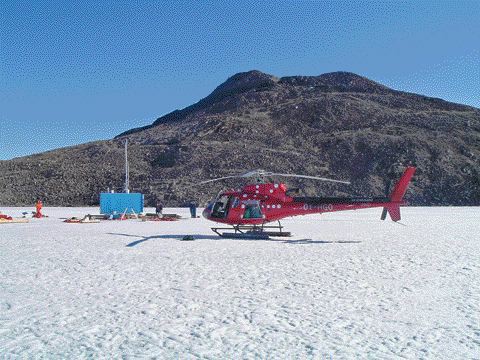Vancouver — Greenland’s largest recovered diamond coupled with a drilled kimberlite dyke structure, has Hudson Resources (HUD-V, HUDRF-O) optimistic its Garnet Lake project could prove out as the region’s best shot for an economic diamond deposit.
Located in western Greenland’s Sarfatoq region, the project sparked renewed excitement in late 2005 following the recovery of numerous diamonds from four separate locations. One sample yielded 226 diamonds, including 13 macro stones (defined as greater than 0.5 mm in at least three dimensions), from 158.7 kg of kimberlite float, found 500 metres south of Garnet Lake.
One stone, the largest diamond ever discovered in Greenland at 2.6 mm by 2.3 mm by 2.26 mm, was a colourless, included octahedron weighing 0.07 carat. A number of the other stones exhibit good colour (white) and shape, and included a clear pink of 0.007 carat.
A recent high-resolution seismic reflection survey conducted over the diamondiferous Garnet Lake dyke clearly showed a structure extending downdip (at about 30) towards the east for at least 2.2 km. The structure is coincident with both the dyke’s surface expression and several drill intercepts.
“We are certainly looking forward to confirming the extension of the dyke with our drill program,” says Hudson Resources president James Tuer. “Typically, seismic images can be very difficult to interpret; however, our survey readily demonstrates a visible structure. The fact that it is coincident with our earlier drill program and diamondiferous kimberlite bodes well for ultimately confirming a large-tonnage deposit.”
A kimberlite dyke 2 to 4 metres thick with several hundred metres of strike and extending downdip about 2 km could have the potential for over 20 million tonnes of material. A drill program, under way, is testing the structure’s lateral and depth continuity with 4,000 metres in 25-40 holes.
Hudson also plans to extract a 100- to 200-tonne mini-bulk sample to obtain a larger and more representative parcel of diamonds from the kimberlite dyke to assess grade and value.
A Canadian example of a diamondiferous kimberlite dyke is De Beers’ Snap Lake deposit in the eastern Northwest Territories, which it acquired from Winspear Diamonds. The diamond giant has defined a minable resource of 18.3 million tonnes grading 1.46 carats of diamonds per tonne with an average value of US$144 per carat. Construction of an underground mine is expected to be complete by 2007 at a capital cost of over $600 million, and an estimated life of about 20 years.
Hudson recently closed a $3.2-million financing for exploration this season. The company also arranged to boost its Garnet Lake interest to 100% (from 80%) by issuing 600,000 shares to its Australian-based joint-venture partner New Millennium Resources.
Hudson’s diamond licences in the area now encompass more than 1,800 sq. km in the Sarfartoq region and are close to ice-free ports and infrastructure in the nearby town of Kangerlussuaq, which receives regular commercial jet service from Denmark and serves as the company’s exploration base.
The diamond hunter posts a market capitalization of $18 million given its 20.8 million shares outstanding and recent 85 trading level. Investor interest in Greenland’s diamond potential has pushed the stock to the top end of its 52-week range of 27-90.


Be the first to comment on "Hudson hunts rocks in Greenland"